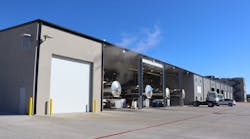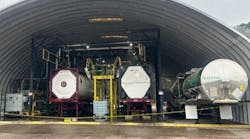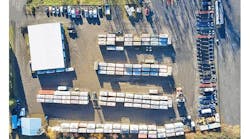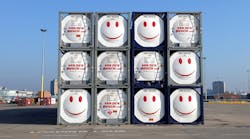Recent reports indicate that the overall US economy has slowed to barely a crawl. Fourth quarter 2007 gross domestic product grew by just 0.6%. Economists are forecasting that the economy will grow at a dismal 0.4% pace during the first quarter of 2008.
This being a presidential election year, we've gotten a liberal dose of economic hand wringing and scare mongering from the politicians. That said, it does not appear that the United States has entered a recession yet. Economic growth certainly has slowed, and the economy is struggling. But growth has not completely stopped.
Moreover, there are some signs that we could be turning the corner on the downturn. Truck freight volumes appear to have picked up. In addition, the American Trucking Associations reported that its truck tonnage index increased 2.4% in January 2008. Increases also were posted in the last two months of 2007.
Closer to home, the tank truck industry appears to be weathering the economic storms. Fleet executives tell us they are keeping their trucks relatively busy, and they are finding some new business. Some fleets certainly are struggling, but it's not across the board.
Among the fleets doing well are those that are involved in international shipments. This includes transload operators and carriers that offer tank container drayage.
On the chemical and foodgrade sides, the tank cleaning sector may provide one of the best indicators of the overall health of the tank truck industry. The economy and how it is affecting the tank truck industry certainly will be a topic of discussion during the National Tank Truck Carriers' annual tank cleaning seminar March 31-April 1 in San Antonio, Texas. Also on the agenda: Foodgrade cleaning research update, environmental regulation report, the latest on the Environmental Protection Agency's effluent guidelines, fall protection panel, legal developments concerning Superfund, proper spinner maintenance, and strategies for cleaning FRP tanks.
While gathering stories for this month's tank cleaning issue, we visited several wash racks and talked with managers at many more. They report that cleaning volumes are off somewhat but their racks are staying busy.
Even with the threat of a recession, new wash racks are being built and are opening this year. The owners say they think the future looks very promising despite the current challenges.
A number of wash rack operators launched extensive renovation projects over the past year. Two facility upgrade programs are profiled in this March issue. In the cover story, National Tank Services managers describe improvements underway at their flagship location and ongoing upgrades planned for other facilities throughout their US network.
A second feature details the aggressive renovation project taken on by the management team at Tank Trailer Cleaning Inc in East St Louis, Illinois. Over a four-month period during the second half of 2007, workers virtually gutted and rebuilt the chemical and foodgrade wash racks at the facility. It was an impressive achievement.
Clearly, the tank cleaning sector may face more economic turmoil in the coming months. However, many of the companies that make up the sector have shown that they are meeting the challenges head on and are wisely preparing for the future.








